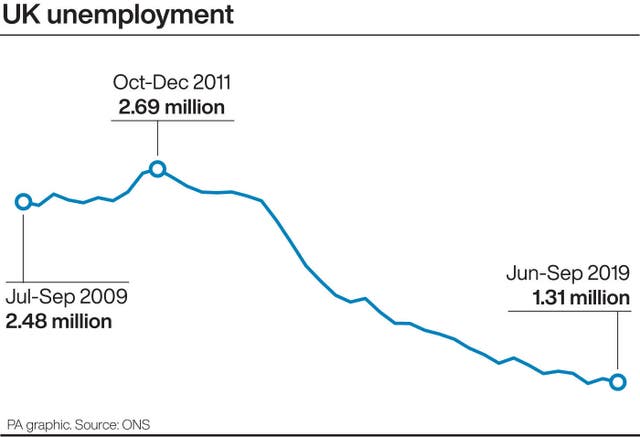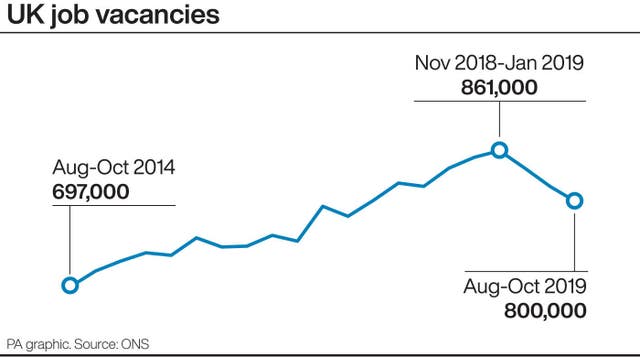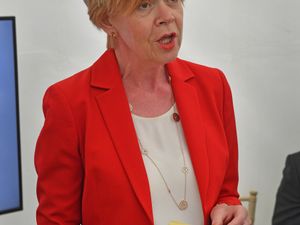Unemployment rises again in West Midlands
Unemployment in the West Midlands rose for the three months to September.
The total stood at 121,000 – 4,000 higher than in the previous three months to June.
The West Midlands unemployment rate at 4.1 per cent remains ahead of the UK rate of 3.8 per cent.
Nationally, the UK employment suffered its sharpest decline in more than four years in the three months to September as the number of job vacancies also plunged.
The number of people in work declined by 58,000 to 32.75 million in the quarter, as the number of people becoming economically inactive jumped higher, the Office for National Statistics (ONS) said.

However, the slump in employment was smaller than analysts predicted, having forecast a decline of 102,000.
The quarterly decline in employment was nevertheless the heaviest since May 2015, when the level fell by 65,000.
The ONS said the falling number of people working in retail, on the back of a number of a recent major collapses and store closure programmes on the high street, significantly contributed to the slump in employment.

Despite the falling number of people in work, the number of people who were unemployed for the period also fell, dipping by 23,000 to 1.31 million.
Analysts had predicted that the rate of employment would stay flat at 3.9 per cent, but the figures revealed a decrease to 3.8 per cent for the period.
The fall in both employment and unemployment was driven by an increase in the number of people deemed economically inactive, which covers people who have not been seeking work or are unable to work.
Claimant count rises
Meanwhile, the number of people claiming unemployment benefits, including Universal Credit in the West Midlands rose by 2,070 to 136,480, or 3.7 per cent of the working population.
Sandwell saw the claimant count rise by 225 to 9,930, or 4.9 per cent of the working population, with Walsall up by 170 to 7,970, or 4.6 per cent of the working population.
Wolverhampton’s claimant count increased by 45 to 9,770, or six per cent of the working population, while Dudley had a rise of 30 to 8,340, or 4.3 per cent of the working population.

Staffordshire’s claimant total was up by 305 to 10,755, or two per cent of the working population, with Cannock Chase seeing a rise of 35 to 1,450, or 2.3 per cent of the working population, South Staffordshire increased by 15 to 1,225, or 1.8 per cent of the working population, Stafford a rise of 30 to 1,410, or 1.7 per cent of the working population, and Lichfield a rise of 50 to 1,155, or 1.9 per cent of the working population.
For Wyre Forest, which includes Kidderminster, there were 25 more claimants at 1,520, or 2.6 per cent of the working population.
The slowdown in the labour market was also highlighted by another decline in the number of UK job vacancies, with the number of roles reporting the biggest annual drop in almost 10 years.
The ninth consecutive monthly slump in vacancies saw the number of positions advertised fall by 18,000 to 800,000 as the rate of decline accelerated from the previous period.
Wage growth also saw the second consecutive month of decline as earnings remained marginally below their pre-financial crisis peak.
Total pay continued to grow much faster than inflation, but the rate of growth slowed to 3.6 per cent from 3.8 per cent growth reported last month. Analysts had predict growth would stay flat at 3.8 per cent.
Statisticians said the average weekly pay, in real terms before tax, for people in the UK was £470 per week.
An ONS spokesman said: "The employment rate is higher than a year ago, though broadly unchanged in recent months.
"Vacancies have seen their biggest annual fall since late 2009, but remain high by historical standards.
"The number of EU nationals in work was very little changed on the year, with almost all the growth in overseas workers coming from non-EU nationals."




